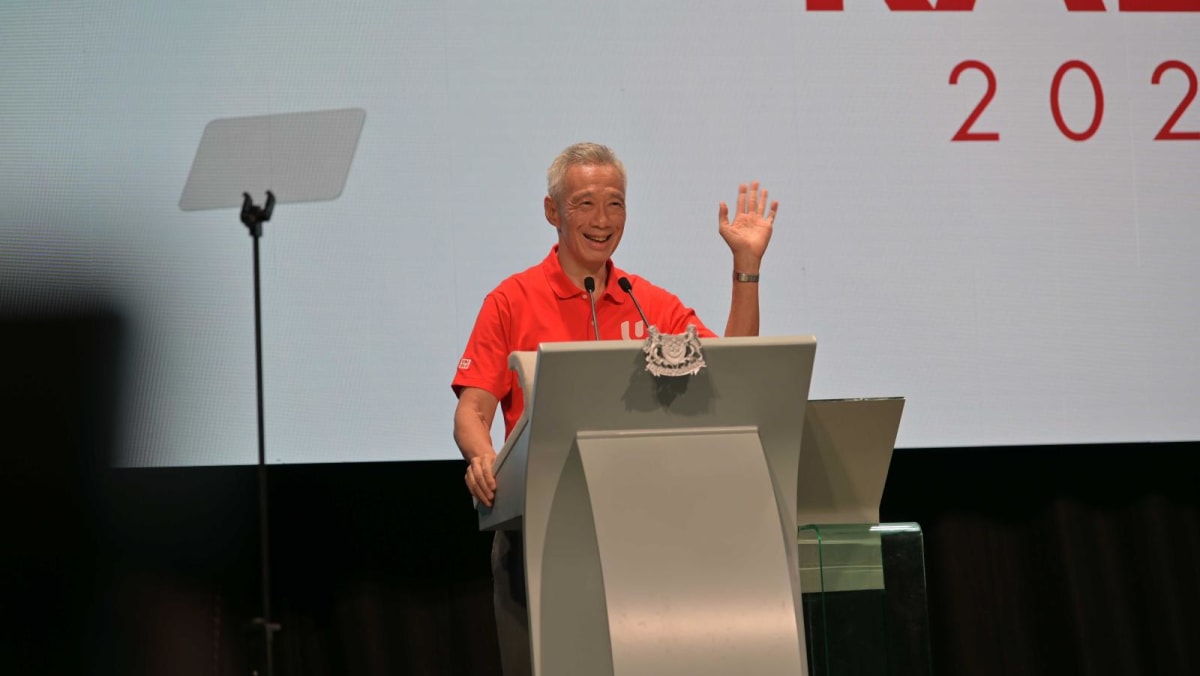This trust between people and government is needed to sustain long-term planning, another imperative that the PAP government has always maintained, said Mr Lee.
He pointed to plans like the new Tuas mega port, Changi Airport Terminal 5, Long Island, the redevelopment of Paya Lebar and the Greater Southern Waterfront, and the decarbonisation of Singapore’s economy.
“I have no doubt that the next team and their successors will conceive more creative and ambitious projects, which will challenge us, inspire us and take our country to the next level,” he said.
Social cohesion would also continue to be important, as race, language and religion remain Singapore’s traditional fault lines, said Mr Lee.
Despite progress in building a shared Singaporean identity, the people will always be pulled by “external forces”.
Singaporeans cannot disavow their diverse ethnic roots and religious affinities, he said, referring to the respective ethnic groups’ affinities with China, India, as well as the wider Muslim-majority region and global Muslim community.
“They can be vulnerabilities, yet we do not want to lose these rich cultural and historical heritages,” said the Prime Minister.
Racial and religious harmony would continue to be a work in progress, but Singapore must also be conscious of other potential divisions.
These include tensions between the haves and have-nots, Singaporean-born and naturalised citizens, political conservatives and liberals, and current and future generations, which can be exploited politically, he said.
As the Singaporean identity is not static, the government has to “guide that evolution, as best we can, sensitively and thoughtfully”, he said, highlighting moves on Section 377A and nurses wearing the tudung.
IMPORTANCE OF TRIPARTISM
Addressing unionists from the National Trades Union Congress (NTUC), Mr Lee said that tripartism has played a vital role in Singapore’s progress.
He pointed to 1969 as a key turning point when an “adversarial approach” between unions and employers was replaced with a “cooperative, tripartite” strategy.
Trust and confidence among tripartite partners continued to be built through challenges like Singapore’s recession in 1985, the 1997 Asian financial crisis, 2008 global financial crisis and the COVID-19 pandemic, he said.
“Through the symbiotic relationship with the PAP, the NTUC has done right by workers, and helped them and their families to enjoy a better life.”
He added that the unions will play an even more crucial role in the future amid geopolitical and economic uncertainty.
“Looking ahead, there are certainly dark clouds on the horizon, but also many opportunities,” said Mr Lee.
Singapore can be a trusted partner when rival countries harbour doubts about each other. Its stability is also an advantage when other countries change directions and switch leaders “every few months”, he said.
SINGAPORE’S PROGRESS OVER LAST 20 YEARS
Looking back at his 20 years as Prime Minister, Mr Lee spoke about the progress Singapore made under his tenure.
Under his premiership, Singapore has become “much better off”.
Singapore’s strategies to transform and upgrade the economy have worked, said Mr Lee, and this has attracted multinational corporations here and helped Singapore companies develop new markets overseas.
While inflation and the rising cost of living are worrying, the government has expanded support measures with CDC vouchers and other forms of assistance, said Mr Lee.
New HDB towns were also built, but older towns were not left behind. Through various upgrading programmes, the government has rejuvenated older estates, kept them up to date and made them fit for a more elderly population, he added.
“This is why, unlike public housing projects elsewhere in the world, our HDB estates never turn into slums or ghettoes.”
Public transport has also improved, he said. Singapore has added another three MRT lines – the Circle, Downtown and Thomson-East Coast lines – in the last two decades. Another two lines – the Cross Island and Jurong Region lines – will be added in the coming years.
Rail reliability issues have “improved significantly” and Singapore’s MRT system is now ranked among the best in the world.
The government also heavily invested in a “first-class healthcare system”, said Mr Lee.
“We have kept our healthcare system up to scratch, we’ve tuned it up after COVID. And we want to make sure that if another pandemic like COVID hits us, we can be more assured that we will be ready to take the load and see everyone through.”
The education system now takes a broader and more holistic approach that promotes lifelong learning, he added.
Students have multiple options and diverse pathways that are not limited to just traditional arts and science courses, but also specialised programmes in music, dance, sports, robotics, among others.
“‘Every school is a good school’ … it is a good slogan, because it contains a lot of truth,” said Mr Lee. “In Singapore, unlike in some other countries, your postal code does not determine your destiny.”
Mr Lee said he also sought to build a more inclusive Singapore through schemes such as Comcare to enhance social programmes and Workfare to supplement the incomes of lower-wage workers.
Various other schemes such as MediShield Life, CareShield Lift, CPF Life and Silver Support help vulnerable groups such as the ill, the disabled, the elderly and the lower income.
